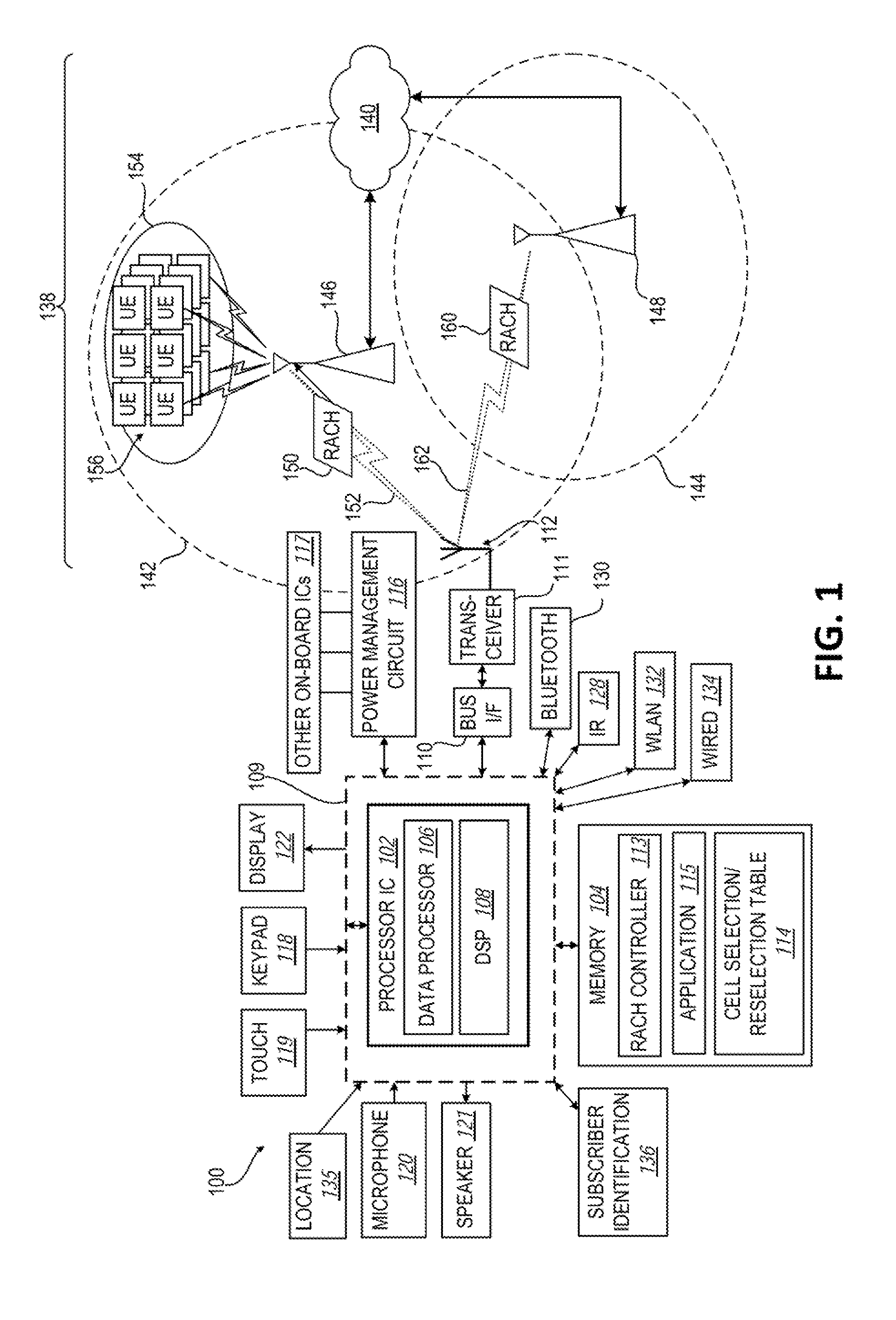Call establishment in highly congested network environment
a highly congested network environment and call establishment technology, applied in the field of selection/reselection of cells, can solve the problem that the rach procedures of the ue can fail repeatedly
- Summary
- Abstract
- Description
- Claims
- Application Information
AI Technical Summary
Benefits of technology
Problems solved by technology
Method used
Image
Examples
Embodiment Construction
[0014]In one embodiment, the present disclosure provides a method of establishing a connection in a congested cellular network environment. A User Equipment (UE) attempts at least one first Random Access Channel (RACH) procedure with a first cell that is currently designated as a serving cell for the UE. The UE detects a failure to successfully connect to the first cell via the at least one first RACH procedure. The UE autonomously determines, based at least on a probability value, which is greater than 0% and less than 100%, whether to de-prioritize the first cell for a period of time. In response to determining to de-prioritize the first cell, the UE reduces a priority value assigned at the UE to the first cell for cell selection / reselection and the UE assigns a randomly selected time period during which the priority value remains reduced.
[0015]In another embodiment, the present disclosure provides a communication device that establishes a connection in a congested cellular networ...
PUM
 Login to View More
Login to View More Abstract
Description
Claims
Application Information
 Login to View More
Login to View More - R&D
- Intellectual Property
- Life Sciences
- Materials
- Tech Scout
- Unparalleled Data Quality
- Higher Quality Content
- 60% Fewer Hallucinations
Browse by: Latest US Patents, China's latest patents, Technical Efficacy Thesaurus, Application Domain, Technology Topic, Popular Technical Reports.
© 2025 PatSnap. All rights reserved.Legal|Privacy policy|Modern Slavery Act Transparency Statement|Sitemap|About US| Contact US: help@patsnap.com



